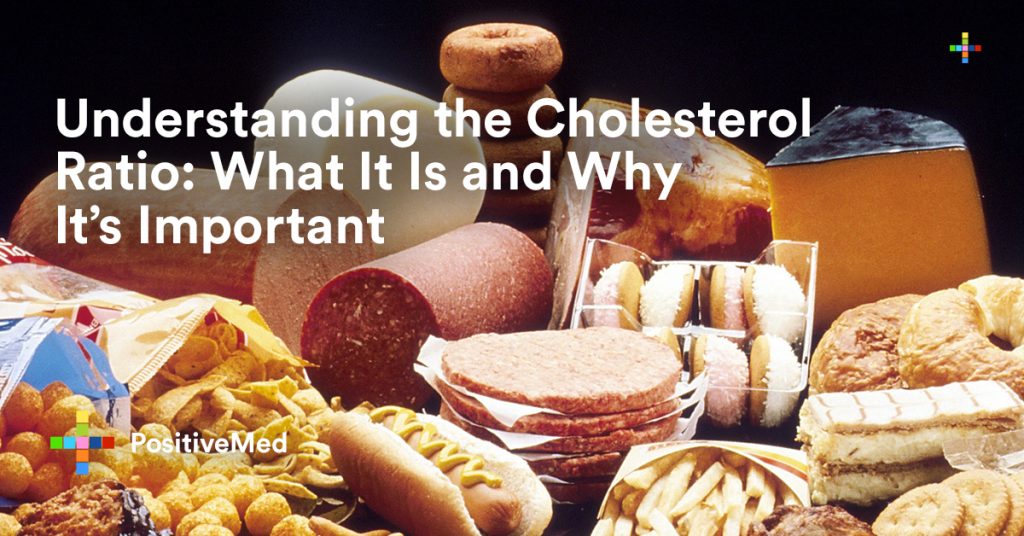Before understanding the cholesterol ratio, it is essential to understand what cholesterol numbers mean. Many people assume that cholesterol is bad, but the truth is that the body needs a certain level of cholesterol for it to function effectively. There are two types of cholesterol which are dietary and serum. Serum is the cholesterol that is produced in the liver and dietary is produced in the food that one consumes. The body needs both types of cholesterol to function effectively. However, when the cholesterol increases more than normal, problems start to arise.

Understanding the Cholesterol Ratio
The cholesterol ration can be obtained by dividing the total cholesterol by HDL number. The total cholesterol is obtained by adding up HDL cholesterol, LDL Cholesterol, and triglycerides. For instance, if your total cholesterol is 160 and your HDL is 80, the cholesterol ratio will be 2. According to American Heart Association (AHA), the cholesterol level should be kept to a minimum of 5. The ideal cholesterol ratio is 3.5. Cholesterol levels are measured in milligrams (mg) of cholesterol per deciliter (dL).
HDL Cholesterol
The high-density lipoprotein is used to measure the level of good cholesterol in the blood. Cholesterol refers to the waxy substance that is found in all cells in the body. It performs different functions such as building the body cells. It is carried out through bloodstream attached to proteins known as lipoproteins. It is referred to as the right cholesterol because it carries triglycerides, harmful fats, and LDL and returns it to the liver for processing. When HDL reaches the liver, it breaks the LDL down and turns it into bile, and it is removed from the body.
Related Link: Alkaline Foods To Prevent Heart Disease, Obesity, And Cancer
LDL Cholesterol
The low-density lipoprotein is a bad cholesterol in the blood. That is why it is always advisable to keep the LDL under certain limits. This is because LDL elements pose a risk for cardiovascular disease when they attack the endothelium and become oxidized. Proteoglycans effortlessly retain the oxidized forms. Over time, increased rates of LDL are linked with the development of atherosclerosis.
Triglycerides
The level of triglyceride varies with sex and age. Individuals with high triglycerides have a high total cholesterol level including a high low HDL level and high LDL level. Many people who have diabetes and heart diseases have high triglyceride levels. High levels of triglycerides are caused by high level of physical inactivity, obesity, and overweight, high level of carbohydrates, smoking alcohol and a high level of alcohol consumption. Genetic disorders may also be a significant cause for increased levels of triglycerides.
Why it is essential to understand the cholesterol level
Having abnormal levels of cholesterol (dyslipidemia) is a condition that should be taken seriously.
When the level of cholesterol starts to build up, the condition worsens because it builds up in arterial walls. A thick buildup narrows the arteries slowing or blocking the flow of blood to the heart.
This is a dangerous condition because blood carries nutrients and oxygen to the brain and heart. If there is no enough oxygen pumped to the heart, one experiences chest pains and if blood flow is blocked completely one may experience a heart attack.
If blood is not pumped to the brain, they experience a stroke. Hence, learning how to manage the cholesterol levels reduces the risk of stroke and heart disease development.
Knowing the cholesterol level is crucial because it helps one to know how to manage the level of cholesterol. If a doctor finds out that you have an abnormal cholesterol level, they recommend that you follow a heart-healthy diet and you exercise regularly.
Also, after the check-up, one must visit the doctor regularly to ascertain whether the diet recommended is working. If the doctor feels that your levels are not improving, they might recommend a change of diet.
Understanding the cholesterol ratio helps one to come up with strategies that can help them to keep the cholesterol level in control. If you want to keep the cholesterol levels in shape, it is always advisable to lose weight and get in shape. Below are ways that you can implement to stay in good shape:
Stop smoking:
smoking is dangerous to your body because it reduces the level of HDL production and weakens the arterial walls.
Get active:
sedentary lifestyle might be nice but affects the body. It is always advisable to get out of your coach and do something that will keep your heart pumping and burn body fats.
Reduce alcohol intake:
drinking increase LDL cholesterol levels and lowers HDL cholesterol production.
Eating right: the right foods will help to keep your cholesterol levels in check. Consuming foods with a lot of foots affects your cholesterol health.
Bottom Line
If you want to live a long and happy life, having cholesterol blood tests frequently goes a long way because you will know the attention that your body needs. Getting tested helps you to avoid the risks of diseases and disorders such as stroke and heart attack.






